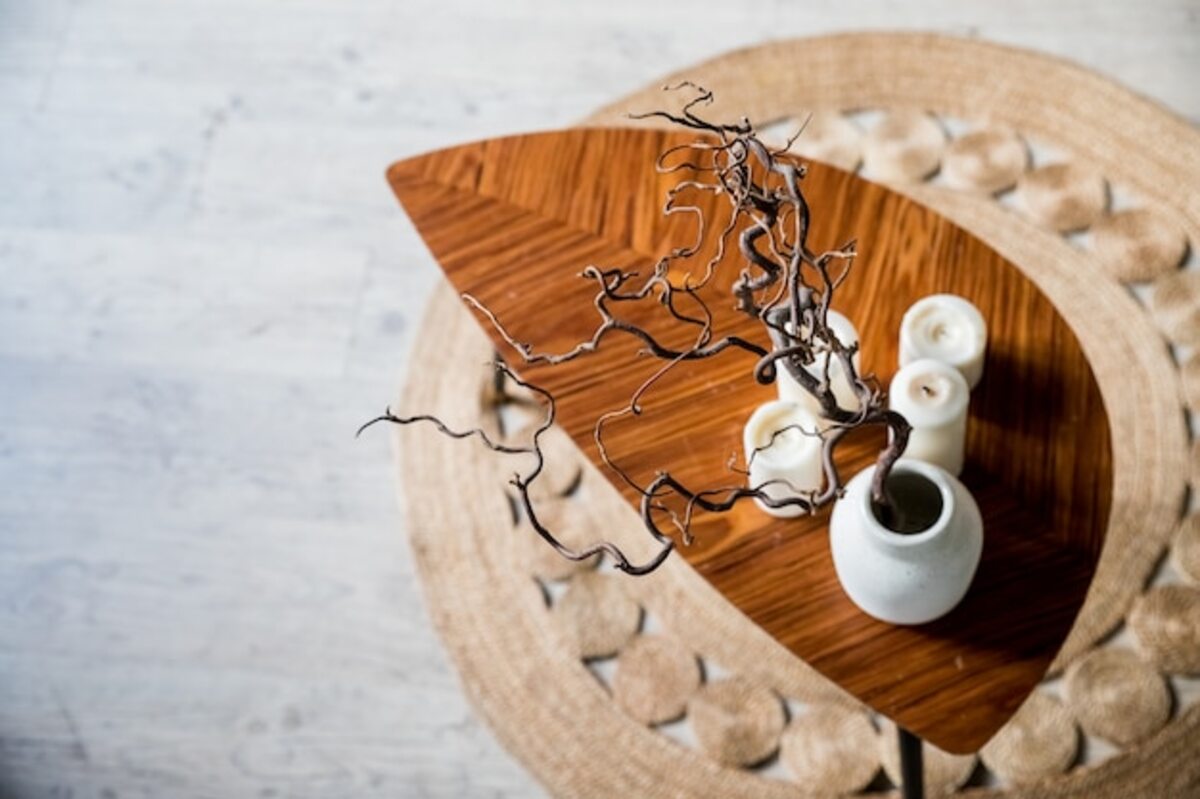Keys to a home purchase that enhances your personal well-being

Buying household items is not just about acquiring objects; it's an opportunity to enhance your personal well-being. From selecting furniture to choosing decorations, every decision can influence your mood and quality of life. In this article, you will discover essential keys that will guide you in a conscious and effective buying process, allowing you to create a space that reflects your style and promotes your happiness. Get ready to transform your home into a refuge that boosts your well-being!
The importance of the environment in personal well-being
The environment we live in has a profound impact on our personal well-being. The way spaces are arranged, the natural light that enters through the windows, and the colors of the walls can significantly influence our emotional and mental state. When choosing home items, it is essential to consider how each element can contribute to creating a harmonious environment that fosters relaxation, creativity, and happiness. A well-designed home is not only aesthetically pleasing but can also be a refuge where we find peace and tranquility after a long day.
Moreover, the connection between the physical environment and our psychological well-being is supported by multiple studies that demonstrate how organized and well-lit spaces can reduce stress and foster greater productivity. Incorporating natural elements, such as plants or organic materials, can enhance our quality of life by providing a sense of freshness and vitality. Thus, each purchase we make for our home should be seen as an opportunity to cultivate a space that not only serves as a residence but also acts as a tangible support for our overall well-being.
2. How to choose furniture that enhances comfort
When choosing furniture that promotes comfort, it is essential to consider both functionality and ergonomics. Opt for pieces that adapt to the needs of your daily life; for example, a sofa with sufficient lumbar support and an appropriate height can make your moments of relaxation much more enjoyable. Additionally, don't forget to explore different textures and materials: a well-upholstered piece in soft fabrics not only adds comfort but also brings warmth to your home. The key is to try out the furniture before purchasing it, ensuring that each piece makes you feel good and fits your habits.
Another important aspect is the arrangement of furniture in your space. A smart design can facilitate the natural flow of movement within the home, creating cozier and less chaotic environments. Consider how you will interact with each piece of furniture; for example, side tables within reach or chairs that invite sitting and enjoying a conversation are essential to fostering a warm and comfortable atmosphere. Also remember versatility: selecting multifunctional furniture will allow you to make better use of the available space without sacrificing comfort. Thus, by wisely choosing these key elements, you will directly contribute to an environment that promotes your personal well-being.
3. Colors and their emotional impact: the art of painting your space
The colors you choose for your home can have a profound impact on your emotions and moods. For example, warm tones like red and yellow often evoke feelings of energy and joy, ideal for spaces where you want to encourage social interaction, such as the kitchen or the living room. In contrast, cool colors like blue and green tend to convey calmness and serenity, perfect for relaxation areas like bedrooms or meditation rooms. By considering the psychology of color when painting your walls or selecting decorations, you can create an environment that is not only aesthetically pleasing but also supports your daily emotional well-being.
In addition to the emotions evoked by different colors, it is important to reflect on how they combine with each other. Color harmony can further enhance the desired emotional effect. Incorporating color accents through cushions, curtains, or wall art allows for adding dynamism to a space without overwhelming it. For example, a neutral base can be complemented with vibrant touches to infuse energy without losing the overall tranquility of the environment. Thus, each color choice becomes a powerful tool in your purchasing process to transform your home into a personal refuge that not only looks good but also nurtures your overall well-being.
4. Investing in quality vs. quantity: which is more beneficial?
When furnishing your home, a fundamental question arises: is it better to invest in quality or quantity? Choosing high-quality items, although it generally means a higher initial outlay, can result in long-term savings. Well-crafted furniture and accessories not only have a longer lifespan, but they are also often more functional and aesthetically pleasing. This choice translates into fewer replacements and a space that feels authentic and welcoming. Ultimately, each quality piece can bring a sense of pride and satisfaction as you see how it complements your personal style.
On the other hand, accumulating lower-cost items may seem tempting at first, but it often results in a cluttered environment that does not promote well-being. As we fill our home with cheap and fleeting elements, we risk losing the essence of the space we long to create. By focusing on a few meaningful pieces that truly resonate with you, you can transform your home into a harmonious sanctuary. Thus, smart investment in quality not only enhances the aesthetics of the place where you live; it also nurtures your emotional and mental well-being by providing you with a more balanced and satisfying environment.
5. Minimalist decoration: less is more to enhance your peace of mind.
Minimalist decoration is based on the premise that "less is more," which implies eliminating clutter and focusing on the essentials. By adopting a minimalist approach in your home, you not only create a visually appealing environment but also reduce the mental overload that can arise from a space filled with unnecessary objects. This style promotes a sense of calm and serenity, allowing you to enjoy spaces that foster mental peace and focus. Each decorative element should be chosen with intention, transforming your home into a personal sanctuary where you can disconnect from daily stress.
Additionally, minimalist decor invites you to reflect on your true needs and desires. By reducing superfluous items, you give yourself the opportunity to value each object for its functionality and emotional significance. This not only helps keep your space organized, but also fosters a deeper connection with the elements you choose to keep. Thus, every corner of your home becomes a tangible testament to your personal style and priorities, creating a harmonious environment where it is easy to find mental peace and inner well-being.
6. Natural elements: how to integrate plants into your home
Integrating natural elements, such as plants, into your home is one of the most effective strategies for improving your personal well-being. Plants not only bring freshness and color to your spaces, but they also purify the air and enhance indoor quality of life. By choosing suitable species according to the light and climate of each room, you can create a harmonious environment that fosters tranquility and reduces stress. From small succulents in the office to lush ferns in the living room, each plant can play a fundamental role in your home.
In addition to their aesthetic and health benefits, plants have a positive impact on our emotional state. The simple act of caring for a plant can be therapeutic; observing its growth reminds us of the natural cycle of life and connects us with our environment. To maximize this effect, consider creating green corners where you can relax or meditate. A space dedicated to plants becomes not only a visual refuge but also a sanctuary that promotes mental peace and overall well-being. Incorporating these natural elements is undoubtedly a significant investment to transform your home into a true personal oasis.
7. Technology at the service of comfort: gadgets that improve daily life
Technology has advanced by leaps and bounds, and in the home sphere, a series of gadgets have been developed that not only provide comfort but also promote a healthier and more efficient lifestyle. From smart lighting systems that allow you to adjust the intensity and color of the lights according to your mood, to programmable thermostats that optimize energy consumption, these tools make it easier to create a cozy environment. The connectivity between devices allows you to manage everything from your smartphone, meaning you can customize your space based on your daily needs and preferences.
Additionally, there are innovative products designed to improve indoor air quality, such as smart purifiers that eliminate allergens and pollutants. This type of technology not only contributes to a cleaner and healthier environment but can also have a positive impact on your emotional and physical well-being. By incorporating these gadgets into your home, you are investing in a space tailored to you, where every element is designed to ease your daily life and elevate your quality of life. Thus, the conscious purchase of technology becomes a key tool to enhance not only the functionality of the home but also your overall well-being.
8. Multifunctional spaces: optimize every corner of your home
The creation of multifunctional spaces is a smart strategy to maximize the use of every corner of your home. In a world where space can be limited, the ability to transform a room into several useful areas is essential. For example, a living room can function as an office during the day and as a relaxation area at night. By selecting furniture that adapts to multiple purposes, such as sofa beds or extendable tables, you not only optimize the available space but also foster a versatile environment that adjusts to your daily needs. This approach not only enhances the functionality of the home but also allows you to enjoy a more organized and clutter-free environment.
Additionally, by integrating multifunctional elements into your decor, you can further enhance your personal well-being. Modular shelves, for example, can serve both to store books and to display your favorite decorative objects, creating an environment that reflects your personality and style. The key is to choose items that are not only aesthetically pleasing but also practical; this will allow you to have a home that flows easily between the different activities of daily life. Thus, by investing in multifunctional spaces, you are not only optimizing your home but also promoting a more balanced and harmonious life within it.
9. Creating relaxation areas: corners dedicated to well-being
Creating relaxation areas in your home is a fundamental step in fostering an environment that promotes personal well-being. These corners, dedicated exclusively to tranquility and introspection, can be designed with elements that inspire you to feel peace and comfort. Consider incorporating a comfortable chair, a soft blanket, or even a small sound system to enjoy relaxing music. The choice of soft colors and natural materials also helps create a cozy atmosphere that invites rest and meditation.
Also, do not underestimate the power of lighting in these wellness spaces. Choosing warm and dimmable lights can completely transform the feel of the place, allowing you to adjust the atmosphere according to your mood. Adding plants or decorative elements that connect you with nature can further enhance this experience. By taking the time to create these special corners in your home, you not only elevate your daily quality of life but also establish a personal sanctuary where you can disconnect from stress and recharge.
10. Conscious budgeting: how to buy without sacrificing quality
When acquiring household items, it is crucial to establish a conscious budget that allows you to buy without sacrificing quality. The key is to make a list of priorities and needs, which will help avoid impulsive purchases that can divert you from your financial goals. Research the different options available in the market and do not hesitate to compare prices and features. Remember that cheap can be expensive; investing in durable and high-quality pieces can save you money in the long run by reducing the need for frequent replacements. This way, you can enjoy a beautiful and functional home without compromising your economic stability.
Also, consider waiting for offers or discounts on items that truly interest you. Many retailers offer special promotions during certain seasons or events, which could allow you to access high-quality products at more affordable prices. You can also explore second-hand stores and local markets where unique treasures can often be found at a fraction of the original price. By adopting this mindful approach to shopping, you will not only be enhancing your living space but also fostering a healthier relationship with your personal finances. This balance between quality and cost is essential for creating a home environment that positively contributes to your overall well-being.



